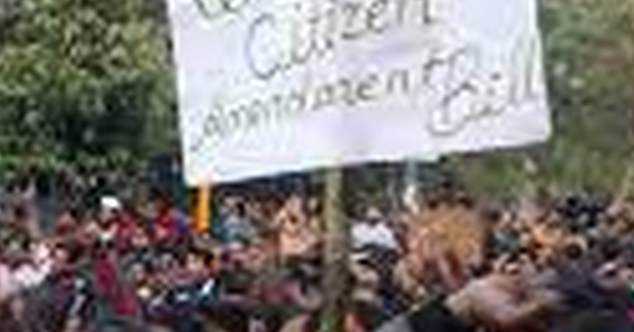Analysis
Supreme Court to determine validity of Section 6A of the Citizenship Act, 1955
The decision will clarify whether citizenship granted to immigrants who entered from Bangladesh between January 1966 & March 1971 are valid

Tomorrow, a five-judge Constitution Bench will decide the validity of Section 6A of the Citizenship Act, 1955. The provision was added to the Act in December 1985 in furtherance of the Assam Accord. The Assam Accord was an agreement between the Union government and the All Assam Students Union (AASU) and the All Assam Gana Sangram Parishad (AAGSP).
AASU and AAGSP were groups that agitated against an influx of Bangladeshi-immigrants after Bangladesh, then known as East Pakistan, separated from West Pakistan on 26 March 1971. Section 6A was added to the Citizenship Act to assuage AASU and AAGSP’s concerns and identify and expel foreign immigrants who entered Assam after 25 March 1971.
However, Section 6A granted citizenship to all immigrants who entered Assam from Bangladesh before 1 January 1966. Further, immigrants who entered Assam between 1 January 1966 and 24 March 1971 were considered as Indian citizens without voting privileges for 10 years.
Petitioners challenged the provision arguing that it singles out Assam and has facilitated mass immigration. They claimed that the demographic of Assam changed drastically due to immediate citizenship being granted to immigrants who claim that they entered Assam before the March 1971 cut-off date.
In December 2023, the Supreme Court reserved judgement in the case after four days of arguments.
Arguments by petitioners
Petitioners including the Assam Public Works President, the Assam Sanmilita Mahasangha, and many others argued that there were no verification systems to check whether immigrants or their parents and grandparents migrated to Assam before 1 January 1966. The granting of immediate citizenship, they said, “incentivised” mass immigration which changed the demographics of Assam. People indigenous to the place missed out on job opportunities and resources in the state. They relied on Article 29 of the Constitution which deals with the conservation of language, script, or culture. Changing demographics, petitioners argued, are causing the local language, script and culture to deteriorate and head towards disappearance.
Petitioners pointed out that 18 percent of Assam’s population comprised illegal Bangladeshi immigrants. In contrast, neighbouring states which also share a border with Bangladesh had fewer illegal immigrants—West Bengal (7%), Meghalaya (1%) and Tripura (10%). This violated the equal protection of law under Article 14 as it singles out Assam and no other state, they stated.
Article 6 of the Constitution states that any person who migrated from Pakistan before 19 July 1948 would be granted citizenship. Petitioners argued that Section 6A indirectly amended this constitutional provision, arguing that Bangladesh was still a part of Pakistan on 1 January 1966. The insertion of a new-cut off date for granting citizenship, they explained, would violate an existing cut-off date for immigrants entering India from Pakistan.
Arguments by respondents
The Union government argued that Parliament was merely exercising its power to make citizenship laws under Article 11. Relying on the Constituent Assembly Debates the Union pointed out that Article 11 was intended to give Parliament the power “to deal with specific situations relating to grant or refusal of citizenship.” The Union submitted that Section 6A was enacted after considering foreign policy and international relations to carve out a special law for the purpose of a specific object.
Other respondents and intervenors, consisting of the Jamiat Ulema i-hind, the All Assam Minorities Students Union (AAMSU), the Citizens for Justice and Peace, argued that the demography of Assam has been ever changing since the 1800s. They argued that Assam has been multi-linguistic and multi-cultural since before Section 6A was enacted. Further, the demographics of Assam were likely to change due to other factors such as inter-state migration. They claimed that Article 29, which deals with preservation of culture, does not encourage “cultural exclusivity.”
Lastly, they highlighted that if Section 6A is invalidated several persons will lose their citizenship rendering them stateless. They also claimed that Bangladesh would consider them foreigners, leaving them nowhere to go. Notably, the Prime Minister of Bangladesh had only agreed to accept immigrants who entered after 25 March 1971.
Impact of judgement
During the hearings, CJI Chandrachud pointed out that Section 6A was an “interesting understanding” between India and Bangladesh. The provision, he observed, had allowed people who arrived before 25 March 1971 to be “brought into the mainstream” by granting them citizenship instead of leaving them “stateless.”
Notably, 38 years have passed since Section 6A was inserted in the Citizenship Act. Immigrants who migrated before 1 January 1966 have enjoyed citizenship for over 50 years.
If Section 6A is declared invalid then all persons who were granted citizenship would immediately be considered foreigners. They will be treated as per the same law governing other outsiders and foreigners.
If the law is upheld, then it would be on the Union government to act on the concerns of the petitioners to determine whether Section 6A has facilitated mass immigration in Assam. The decision would impact Parliament’s powers to make special laws relating to citizenship under Article 11.



